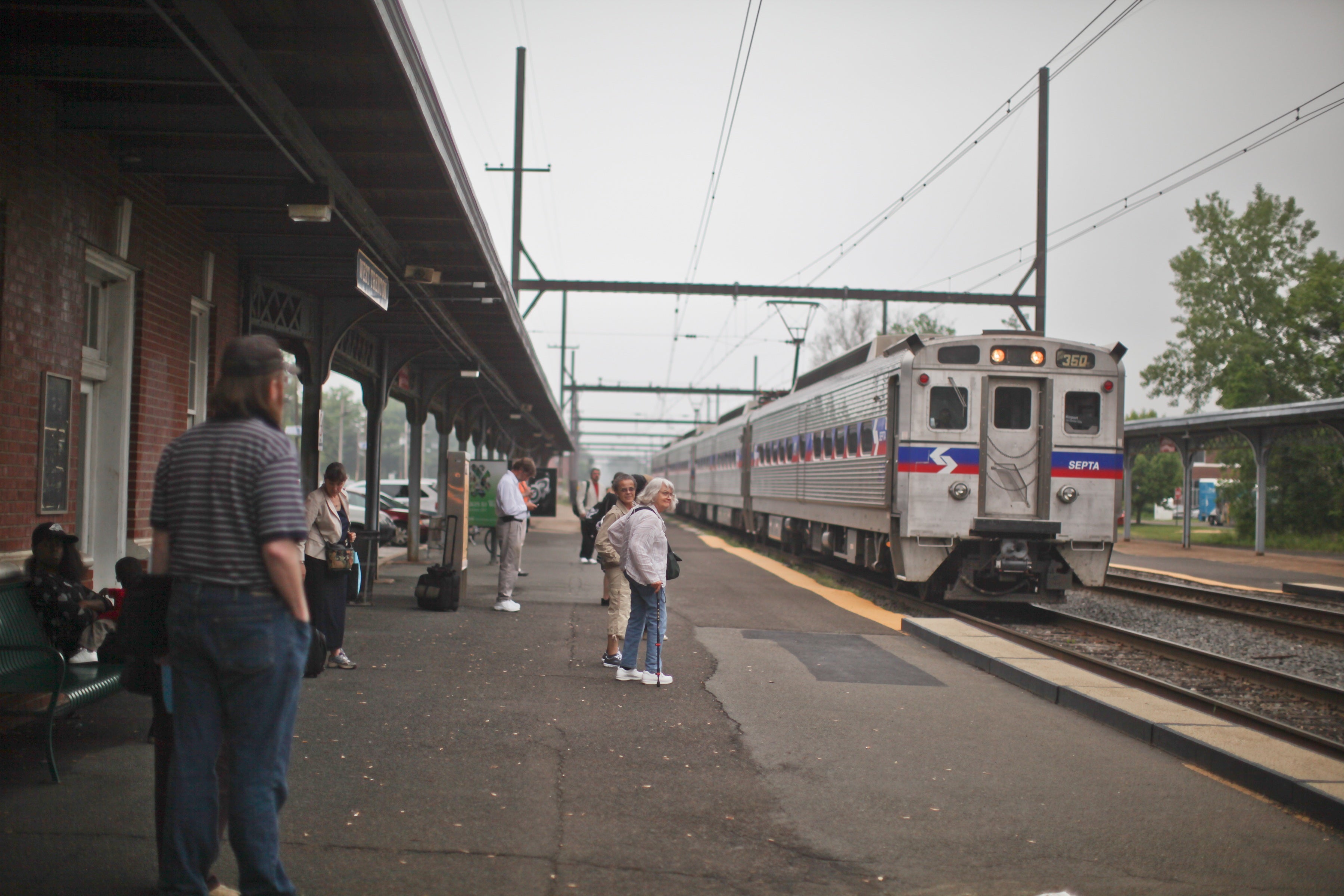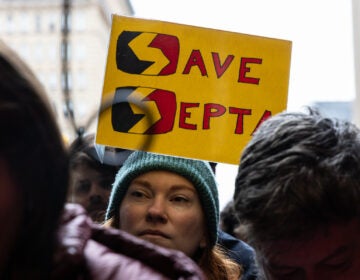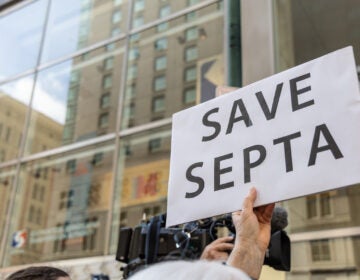What would Trump’s budget mean for Philadelphia transit?

If Congress adopts President Donald J. Trump’s budget proposals, not much would change in Philadelphia, transportation-wise.
And that’s a problem, the region’s boosters say. SEPTA is considering two major service expansions—extending the Norristown High Speed Line (NHSL) to King of Prussia and the Broad Street Subway to the Navy Yard—both of which would be doomed without the federal dollars President Trump proposes to cut.
President Donald J. Trump’s so-called “skinny budget” called for the elimination of the Transportation Investment Generating Economic Recovery (TIGER) grant program and the Federal Transit Administration’s (FTA) Capital Investment Program, better known as New Starts. The skinny budget is an early draft of the President’s budget that often works as a trial balloon, but PoliticoPro [pay wall] reported that both transportation cuts would be included in the full budget proposal. The move would cut around $900 million for new transit projects and multimodal transportation improvements in fiscal year 2017.
Cuts to the New Starts program could be a death knell to some of SEPTA’s long-term expansion plans. SEPTA is currently studying an extension of the Norristown High Speed Line to King of Prussia and extending the Broad Street Line to the Navy Yard. Other expansions further down the pipeline include extending the Media-Elwyn line to West Chester, and bringing regional rail to Quakertown.
In its long-range capital plans, SEPTA assumed New Starts would cover half of the service expansion capital costs, said SEPTA Deputy General Manager Rich Burnfield. “If you lose 50 percent of the funding it would make it very difficult to move ahead with a major initiative.”
Losing New Starts funding might not have been a big deal for the region a few years ago, said Josh Sevin, Acting Executive Director of the Economy League of Greater Philadelphia. But now that SEPTA’s poised to expand service to King of Prussia, it’s a potentially devastating loss. “Philadelphia is in a position now where we can really take advantage of these funds.”
Sevin described both proposed expansions as “critical pieces” of the region’s long-range growth plan. If New Starts were cut, Sevin said the region should still move forward with the expansions, but admitted the funding challenges would grow considerably, perhaps insurmountably.
SEPTA would be left in a particularly challenging situation if the federal government stopped supporting new infrastructure projects, because it’s a regional authority dependent mostly on Harrisburg for infrastructure expansion funds. Even if Philadelphia itself had the taxing authority needed to cover such large outlays—Philadelphia’s ability to raise revenues is constrained by state law—it would be difficult to convince all of the region’s other municipalities (which also have limited taxing authority) to coordinate.
The Obama administration began the TIGER program in response to the Great Recession, every year awarding $500 million in grants that go towards funding multi-modal and multi-jurisdictional transportation projects. Since the program’s start in 2009, it has distributed $5.1 billion to 421 projects in all 50 states.
In the first seven rounds of TIGER grants, Philadelphia (including SEPTA and the Center City District) won funds in each of the first seven years of TIGER grants, totaling $83,627,699 in federal funds, which helped pay for Dilworth Park, improvements to the region’s trails, new tracks on SEPTA’s West Trenton line and other multimodal infrastructure improvements. Philadelphia came up short in 2016, but nearby Camden managed to secure $16.2 million to improve connections between North Camden and the city’s downtown. A project to overhaul SEPTA’s regional rail station in Claymont, Delaware also received funds last year.
Especially in recent years, presidential budget proposals have been seen more as political statements than policy documents, and many commentators have declared President Trump’s dead-on-arrival already, sight (partially) unseen.
By spreading money around liberally to help fund popular projects, the TIGER program itself is very popular. New Starts funds will be critical for some desperately needed infrastructure projects across the nation, including the Gateway tunnel in New York City. If work on the Gateway tunnel doesn’t begin soon, Amtrak faces the possibility of the Northeast Corridor shutting down, as the tunnel it relies on now was flooded and damaged significantly during Superstorm Sandy and has less than twenty years left before it will no longer be safe to use.
Those are just two of a whole host of popular spending programs the budget proposes to cut—everything from rural airports to Community Development Block Grants (which help pay for programs like Meals on Wheels and home heating assistance for low-income households) and the Corporation for Public Broadcasting (through which WHYY receives about 7 percent of its operating budget)—leading even top GOP senators to declare the budget dead-on-arrival.
Some scholars argue that the federal government should get out of the business of funding transportation infrastructure. The FTA was created in 1964 in part to help urban areas convert bankrupt for-profit mass transit companies into public transportation agencies. Soon after, Congress established the Federal Highway Administration to oversee the creation of the interstate highway system, itself a nascent product of the Federal Aid Highway Act of 1956.
Now that urban mass transit systems are stable and the interstate highways are built, there’s no real need for federal oversight and management, these scholars argue. Federal funds tend to go towards building new projects, which are frequently unnecessary. “At the end of the day, the people that use them—that benefit for them the most—really wouldn’t pay for them to be there,” said Prof. Erick Guerra, a fellow at the University of Pennsylvania’s Institute for Urban Research.
Still, while Guerra generally supports a move away from federal transportation funding and toward regional funding, he doesn’t support Trump’s proposed cuts. “It says basically that transit projects are only locally important, but it says nothing about roads being almost entirely locally important as well,” Guerra said.
Guerra said he might support a holistic plan to gradually reduce federal taxes and spending for new transportation infrastructure across all modes, which would allow states and localities to then decide whether they would raise revenues to fill in the gap or not. But a single swipe that only targets a relatively small part of federal transportation spending—New Starts is just $2.1 billion of U.S. DOT’s $98.1 billion budget—would cause more harm than good.
The cuts also seem to run counter to President Trump’s pledge to increase infrastructure spending through a mix of regulatory overhauls, tax incentives and spending proposals. Scant details have been provided on that proposal.
Despite the headlines promising of $1 trillion in transportation spending, the President has only proposed $137 billion in federal tax credits for privately financed infrastructure projects, which would likely include non-transportation infrastructure such as utilities. Republicans in Congress have made contradictory statements on how to pay for the proposal and what types of projects it would fund. Given the focus on private financing, that plan would seem to incentivize construction of new, fee-generating infrastructure, rather than address the multi-billion dollar backlog of maintenance and rehabilitation work in the greater Philadelphia region.
WHYY is your source for fact-based, in-depth journalism and information. As a nonprofit organization, we rely on financial support from readers like you. Please give today.





